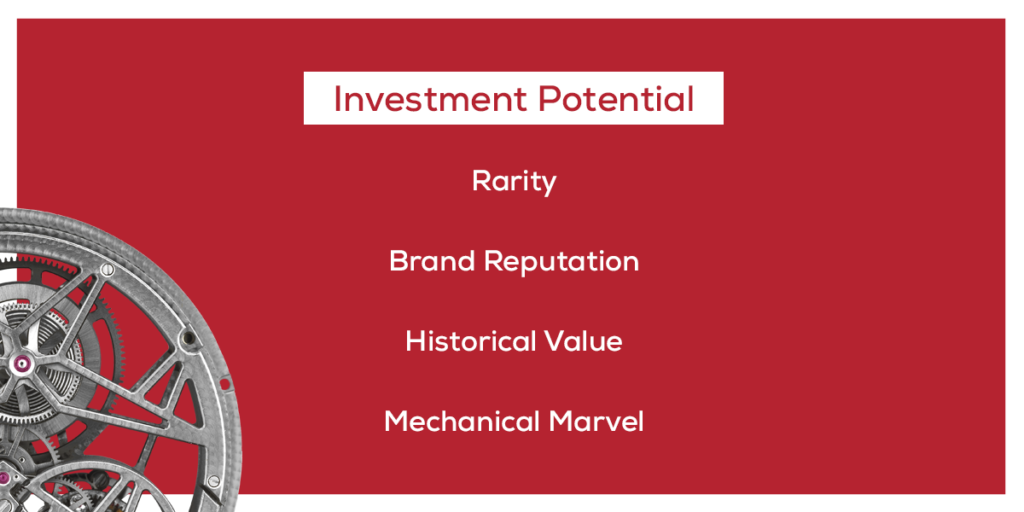Your Guide to Tourbillon Watches: Analyzing the Investment Potential
What are tourbillon watches, and why do they command such admiration in the world of horology? These sophisticated timepieces, often hailed as the apex of watchmaking, have captivated enthusiasts for generations with their intricate mechanics and elegant design.
In this article, we’re going to learn about tourbillon watches. We’ll talk about where they came from, how they’re carefully made, and why people value them as both special family treasures and good investments. We’ll also look at how these watches have become more available to people and why they remain popular among collectors.
Delving Deeper into the Tourbillon’s Legacy
Let’s start by delving into the captivating history of tourbillon watches. Originally patented by Abraham-Louis Breguet in 1801, the tourbillon was designed to counteract the effects of gravity on a watch’s accuracy. This innovation was a game-changer, and it marked the beginning of a remarkable journey in horology.
Over the years, tourbillon watches evolved from being rare and exclusive pieces for royalty and watch connoisseurs to becoming coveted symbols of luxury and precision. Brands like Patek Philippe, Audemars Piguet, and Rolex have all embraced this intricate complication, showcasing their commitment to craftsmanship.
Tourbillon movements are a testament to human ingenuity and craftsmanship. Picture this: Inside the heart of a watch, a small, mesmerizing cage rotates continuously, carrying the escapement and balance wheel. This constant motion averages out the effects of gravity on the watch’s timekeeping, resulting in unparalleled accuracy.
The level of precision and patience required to create a tourbillon movement is akin to crafting a fine piece of art. Master watchmakers spend countless hours painstakingly assembling the intricate components by hand. This dedication to perfection is what sets tourbillon watches apart.
Tourbillon Investment Insights
Now, let’s talk about the investment potential of tourbillon watches. Are they worth the hefty price tag? The answer is a resounding “yes” for many collectors and investors, especially considering their status among watches with complex complications.
- Rarity: Tourbillon watches are not mass-produced; they are crafted in limited quantities. Owning one means having a piece of horological history in your collection.
- Brand Reputation: Brands known for their tourbillon watches have established a legacy of excellence. Owning one of their timepieces is a mark
of prestige. - Historical Value: Tourbillons have a rich history, making them highly sought-after by those who appreciate the heritage of watchmaking.
- Value Appreciation: Like fine art, these timepieces have the potential to appreciate over time. Their intricate craftsmanship and technical prowess mean that they can often become more valuable as they age, particularly if kept in excellent condition or if they have provenance.
- Mechanical Marvel: Beyond aesthetics and brand, the mechanical complexity of these watches is a draw for investors and enthusiasts alike. The high level of skill required to create a tourbillon movement ensures that each piece is an example of peak mechanical artistry
Market Trends
The tourbillon watch market is evolving, offering a surprising twist with the emergence of budget-friendly options. This trend caters to a growing demand for cheaper tourbillon watches, allowing a broader audience to appreciate the tourbillon’s mechanical allure. In response, watchmakers have crafted accessible models, integrating the once-exclusive tourbillon into watch dials at a fraction of the traditional cost.
New Opportunities
This shift has not only opened up the market to new consumers but has also stimulated growth, as tourbillon watches become a more frequent addition to collections worldwide. It’s a significant step towards inclusivity in the realm of luxury watches, making the tourbillon’s elegance and precision more accessible than ever before.
Pros and Cons
Like any investment, tourbillon watches have their pros and cons. Let’s take a closer look at both sides of the coin.
Pros
- Aesthetic Appeal: Tourbillon watches are undeniably beautiful, often featuring open dials that showcase the mesmerizing movement.
- Status Symbol: Owning a tourbillon watch is a symbol of status and sophistication, making a powerful statement.
- Potential Investment: If chosen wisely, tourbillon watches can appreciate in value over time, offering a solid return on investment.
Cons
- High Cost: The price of entry for a tourbillon watch is substantial, making it inaccessible for many.
- Maintenance: Tourbillon movements require regular servicing by skilled watchmakers, which can be costly.
- Limited Everyday Use: Due to their delicate nature, tourbillon watches may not be suitable for everyday wear.
Long-Term Value: Are Tourbillon Watches Worth It?
What is a tourbillon watch, and what makes it a worthy investment? Investing in a tourbillon watch is not just about owning a timepiece; it’s about acquiring a piece of history. These watches have stood the test of time, both in terms of their mechanical precision and their enduring appeal to collectors.
As time passes, the rarity and historical significance of tourbillon watches are likely to increase. This, coupled with the craftsmanship and brand reputation, solidifies their long-term value. Owning a tourbillon watch is not just a financial investment; it’s an investment in artistry and history.
In conclusion, tourbillon watches are not just instruments for measuring time, they are pieces of art that transcend generations. Their history, craftsmanship, and investment potential make them an enticing choice for collectors and enthusiasts alike. If you have the means and the passion for horology, investing in a tourbillon watch can be a rewarding experience. However, it’s essential to carefully consider your budget, the brand, and your long-term goals before making a purchase.
So, are tourbillon watches worth it? Absolutely, if you value the artistry, history, and precision that these exceptional timepieces represent.